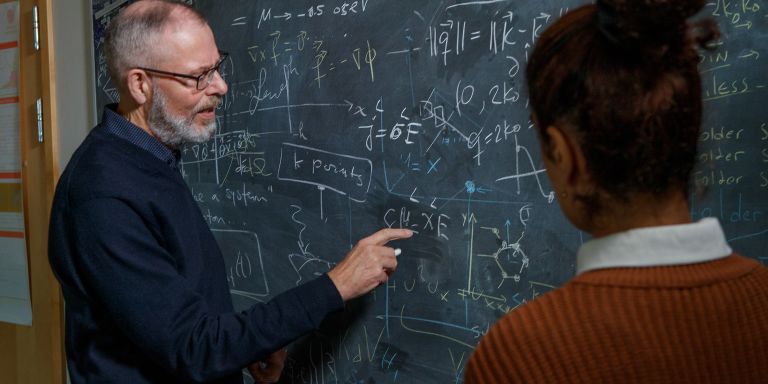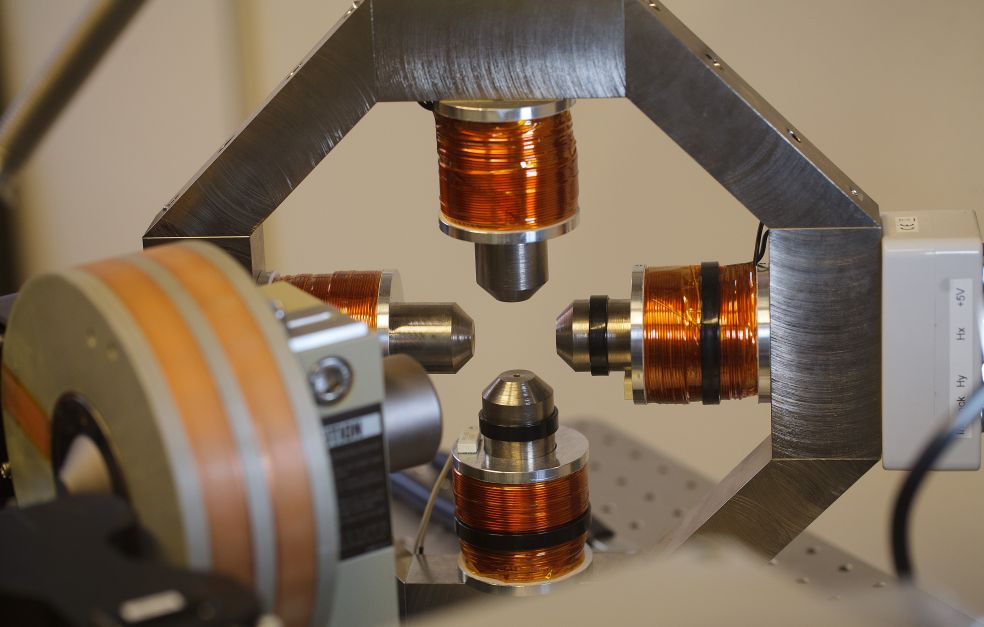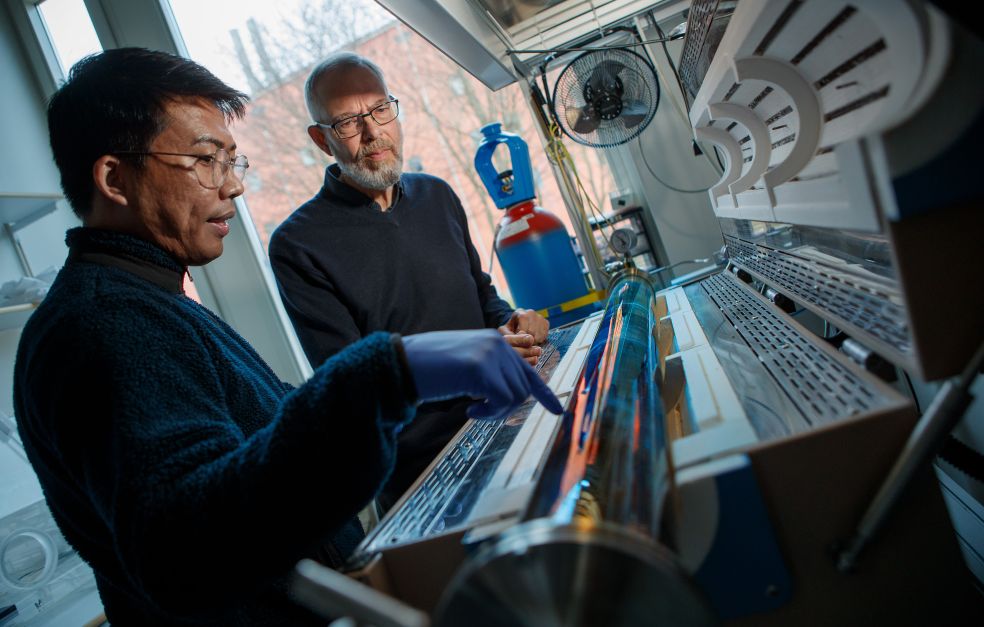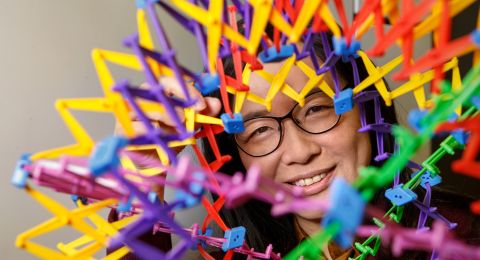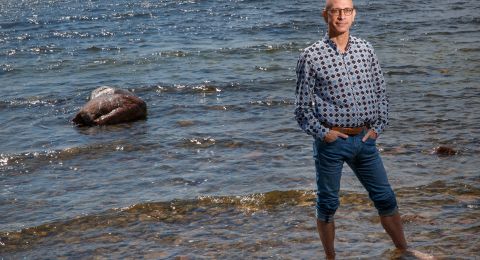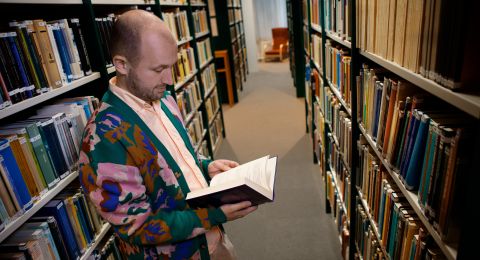Wallenberg Scholar Peter Oppeneer aims to understand the dynamic quantum mechanisms that arise in materials when they are out of equilibrium. His cutting-edge theoretical research could lead to ultrafast electronics.
Peter Oppeneer
Professor of Physics
Wallenberg Scholar
Institution:
Uppsala University
Research field:
Theoretical solid-state physics, particularly the theory of ultrafast non-equilibrium dynamics in technologically relevant materials.
More than 20 years ago, researchers made the surprising discovery that ultrashort light pulses could change a material’s magnetic properties. We now know that both ultrashort light pulses and electric current pulses can affect magnetic materials. But no one knows exactly how or why this happens.
One reason is that the change happens extremely quickly. The time scale is measured in attoseconds, which are an almost unimaginably short unit of time. Even light does not travel far in that interval of time. In one attosecond, light moves only about 0.3 nanometers, equivalent to the width of a molecule.
During this short period, atomic particles leave their stable state, and a non-equilibrium condition forms at the quantum level. Here, the particles influence each other’s properties in several ways, many still completely unknown, complicating understanding. Since the processes are intertwined, a completely new theoretical framework is needed to describe what happens.
“My goal is to create a greater understanding of the quantum dynamics of materials that are out of equilibrium. That theoretical framework can then be used to solve important problems in the field of non-equilibrium dynamics of solid materials,” says Oppeneer.
Faster computer memories
A new framework can resolve a number of issues in materials science. For instance, a better understanding could lead to much faster electronics than those currently in use. Potential applications include magnetic computer memories that store information at much higher speeds.
The trick lies in being able to exploit more properties of electrons. At present, we use the spinning motion of electrons (“spin”) to store ones and zeros in computer memories and hard drives. A deeper understanding of dynamics could allow use of an additional property, namely the orbital moment of electrons. This is a quantum property of the electron that describes its motion around the atomic nucleus.
The emerging field is called orbital-based electronics and is considered very promising, offering the potential for not only faster, but also more energy-efficient electronics.
“One advantage is that future computer memories can be manufactured from cheaper materials such as chromium, vanadium, titanium, and even copper oxide. They will be more energy-efficient than current solutions. Replacing rare metals may also mean more sustainable manufacture,” he says.
Another field opening up is new superconducting materials where transport properties can be tailored to conduct electricity without resistance.
Empiricism the key
As a Wallenberg Scholar, Oppeneer is attempting to create a theoretical framework for orbital-based electronics. This theoretical work builds on which solution equations require access to supercomputers. After the theories are mathematically validated, each result is followed up with experiments.
“Physics is an empirical science, and therefore the goal is always to see how theory and experiment yield consistent results.”
I am attracted to explaining things that others have not yet understood and contributing to the development of entirely new fields.
This project is making use of large research facilities, such as XFEL in Hamburg and Max IV in Lund. There, it is possible to accelerate electrons almost to the speed of light. The technology is called free-electron laser and is a type of X-ray radiation that can be used to study different material structures at atomic level.
Oppeneer’s lab at Uppsala University also has the necessary technology for some of the experiments. Others are done in collaboration with experimental physicists in Germany and elsewhere who can measure these extremely short time spans.
Teenage interest
His interest in physics and mathematics was sparked as a teenager. He was attracted to the possibility of theoretically describing and explaining natural phenomena. He obtained his doctorate at the Vrije Universiteit in his native Netherlands.
After his postdoctoral period, however, he hesitated to continue his academic career. At that time, one of his colleagues had sent over 200 applications without success. Suddenly, he doubted his own abilities.
“So I made a deal with God: if you want me to continue as a physicist, I want to receive an offer without sending any applications. And that’s exactly what happened.”
He has been a believer since his teenage years, and the Christian faith remains an important part of his life. He believes the idea of a conflict between science and religion to be a myth. Rather, they are two complementary parts of life.
His drive remains to develop the theoretical understanding of natural phenomena.
“There is still a whole world of extraordinary physical phenomena occurring in non-equilibrium and on ultrashort time scales waiting to be explored.”
Text Magnus Trogen Pahlén
Translation Maxwell Arding
Photo Magnus Bergström

